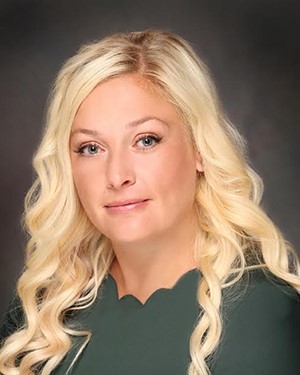Advanced coursework and career and technical education (CTE) pathways provide high school students with the opportunity to learn and practice crucial college and career readiness skills while earning college credit and career certifications. According to The Education Trust, “Research shows that when students are given access to advanced coursework opportunities, they work harder and engage more in school, leading to fewer absences and suspensions and higher graduation rates.” Despite widespread understanding of the important opportunities provided by Advanced Placement (AP), International Baccalaureate (IB), Dual Enrollment, and CTE, schools continue to struggle with addressing opportunity gaps by supporting all students in accessing and succeeding in these courses and programs.
Leading up to 2016, Ogden High, a Title 1 school in Ogden, Utah, where I was the assistant principal, was experiencing just this situation. Despite many college and career readiness options for students, enrollment in these courses remained low due to perceptions of student ability and barriers to access. The school’s graduation rate was also below the state average. The building leadership team, school counselors, and program coordinators reviewed the data and overall school culture and recognized a need to create a schoolwide shift toward college and career readiness.
Our efforts led to establishing the “why” with focused school and teacher goals, systematic professional development toward meeting students where they are in their learning, and skill building, including a schoolwide effort to increase content literacy. We also established a focus on building relationships, changing counselor conversations, celebrating student enrollment—not just pass rates—and strategically increasing course offerings in AP, IB, and CTE programs.
Lessons Learned and Successful Strategies
Below are four lessons learned and strategies that our team found fundamental in supporting all students in advanced courses:
- Building skills and increasing opportunities is not enough. We need to ensure our teachers can meet the needs of all students in these courses and programs. Key strategies include:
- Creating a schoolwide focus on content literacy growth, using AVID professional development and instructional strategies in all courses
- Including our program teachers as instructional leaders on our AVID site team and building leadership teams
- Systematically looking at student data to support needs like content literacy within departments
- Supporting our teachers in becoming AP and IB national graders
- Ensuring teachers and departments had input on increasing course offerings and taking advantage of our shift to a 5×5 block schedule, including providing support courses like labs for science and writing
- Aligning resources within the school plan to ensure staffing, student monetary needs for program participation, PD, and other resources supported the increase in rigor schoolwide and program enrollments tied to our goals
- Putting systems into place to ensure interventions have taken place before any un-enrollment in these courses occurred
- Systematically eliminating unnecessary pre-requisites and program barriers to access
- Aligning pathways should start in middle school so students know their options. Key strategies include:
- Increasing middle school counselor knowledge and school-to-school communication through quarterly collaborations and professional development
- Identifying rigorous course pathway interest in 8th and 9th grade
- Increasing AP and CTE options in middle school
- Facilitating vertical articulation of courses, including advanced and CTE pathway courses
- Increasing parent and community knowledge and awareness increases involvement and participation. Key strategies, often coordinated by our college and career coordinator, include:
- Parent classes and information at back to school night and parent-teacher conferences
- Utilizing surveys and opportunities for feedback
- FAFSA and scholarship nights
- College application supports
- Community-driven rewards
- Advertising programs in multiple languages
- Increasing counselor and parent communication through course planning opportunities
- The importance of celebrating successes along the way as a part of school culture and student connections. Key strategies include:
- The Golden Tiger Award, which recognizes teachers for supporting students toward our school goals each term
- Department students of the month
- Updates to program enrollments and recruiting, including supporting teachers in building relationships with their students and recruiting for their advanced and CTE pathway courses instead of relying on counselors
- Constant—and visible—reminders of the good things teachers and students are doing and how we are moving forward in our college and career readiness goals
Focused Efforts Yield Focused Results
Over the course of five years, these focused efforts resulted in a graduation rate increase from 76% to 96% and an increase in enrollment in rigorous courses to 91 percent, above the state average. The number of seniors enrolling in college rose to near the statewide average, and students received more than $2 million in scholarship offers, including more than $800,000 awarded to students who are the first in their families to attend college
More students, including Ogden High’s students of color, were graduating more prepared to compete globally. While the work of closing opportunity gaps in advanced and career pathway coursework continues, the school’s leadership team and educators are committed to ensuring access to all that these courses offer.
Resource alignment, articulated access, and foundational instructional supports are critical steps in enabling student success and program growth. A guidebook and toolkit on how school leaders can lead their learning communities through systems change is available from the Wallace Foundation. What effective strategies have you used? What barriers remain in your school’s efforts?

